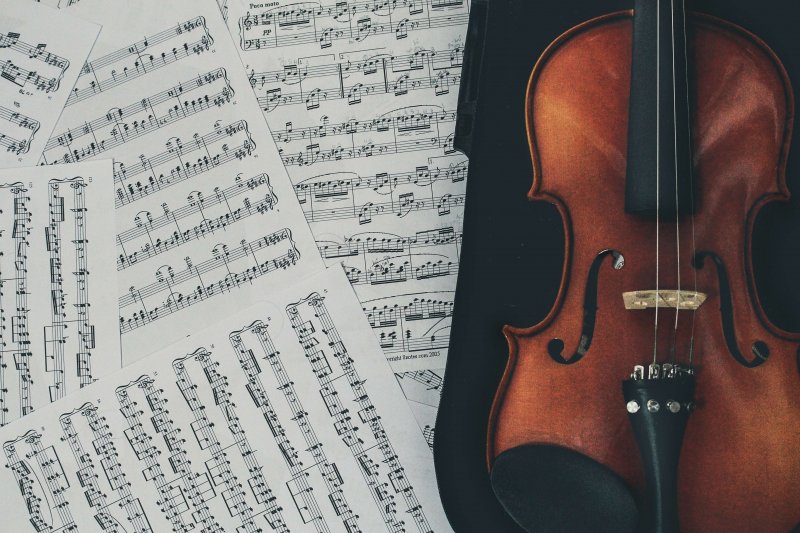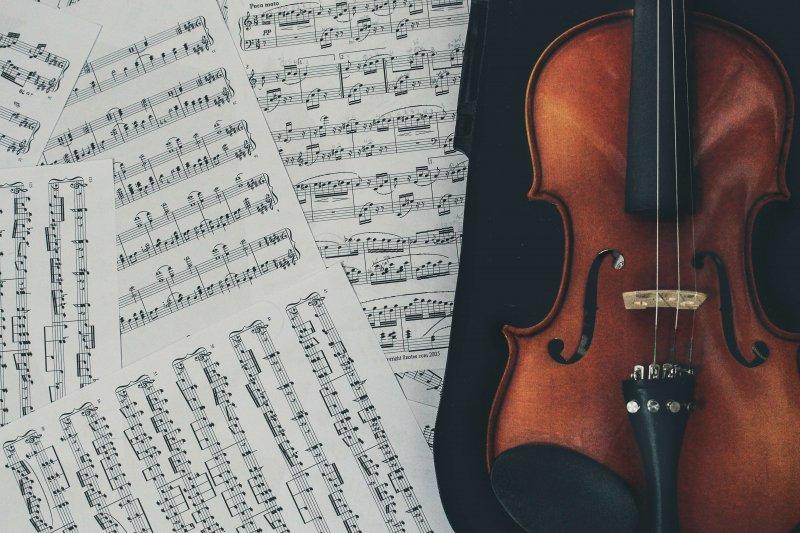 If you’ve decided you may want to learn the violin, you’re in the right place! You might be wondering is it hard to play the violin, and this guide will answer that question for you. We’ll also share common challenges new violinists face and how to overcome them.
If you’ve decided you may want to learn the violin, you’re in the right place! You might be wondering is it hard to play the violin, and this guide will answer that question for you. We’ll also share common challenges new violinists face and how to overcome them.
Is it Hard to Play the Violin?
If we’re being honest, the violin is one of the hardest instruments to learn. With that said, a positive attitude and knowledge about how to learn to play the violin on your own and with help can help you master the skill. You’ll want to find an excellent teacher to help you on your journey, too.
To help you on your journey to learn to play violin, we’re going to share 3 common challenges and how to overcome them. The challenges are:
- Understanding the physicality of the instrument
- Finding time to practice
- Learning to read standard musical notation
Challenge: Understanding the Physicality of the Instrument
When asking is it hard to play the violin, you have to understand that the violin and viola are unique among the stringed instruments in how they are physically held and played. The instrument is placed on the left shoulder, slightly under the chin, and fingered with the left hand while the right hand operates the bow. This positioning can present the first challenges to the young student.
The violin requires you to coordinate both the left and right hands while engaged in entirely different functions. You’ll use your left hand to finger the notes. Unlike the guitar, the violin has no frets to guide the player in positioning their fingers. The intonation of the instrument, or the ability to play in tune, rests with the placement of the fingers of the left hand. It takes steady practice to develop muscle memory to ensure the correct placement of the fingers.
A few teaching methods, such as the Suzuki Method, are designed to develop the ear while developing muscle memory that can help you meet this challenge. Another technique involves using tape to create “frets” on the instrument. This can help you to learn the proper positioning.
The right-hand controls the bow. The bow is drawn across the strings vibrating them and sounds the notes being held with the fingers of the left hand. Proper bow technique can be complex at first. Again, it requires muscle memory to apply the correct speed and pressure with the bow while coordinating the fingers of the left hand. The slightest variations of speed or pressure can drastically affect the instrument’s tone. Developing this skill is often said to be the most difficult technique to master.
How to overcome this challenge: Slow, focused, methodical practice is the best way to develop your coordination and technique.
Challenge: Finding Time to Practice
Every instrument requires dedication and practice to learn efficiently. Violinists must set aside time to practice every day to become proficient. We all lead busy lives with school, work, and social lives. However, if you want to learn to play violin, it’s important to practice a little every day.
Developing muscle memory takes time and diligence. Many beginning students become frustrated by their inability to coordinate their fingers and bow. It can be challenging to listen to yourself when first learning bowing techniques. The slightest speed variation or pressure can send the instrument into convulsions, creating unpleasant coughing or screeching sounds! Again, when first starting out, short and focused daily practice sessions are the best way to meet this challenge.
Learning to play any instrument requires technique, passion, practice, endurance, and patience. When asking is it hard to play the violin, know that you have to add these to your list of skills, too: pitch, intonation, straight bowing, clean shifting of position, bow control, good bow hold, and balance between bow speed and finger coordination.
How to overcome this challenge: All of the skills mentioned above require daily practice to master, so make sure you set aside time each and every day to practice! It may help to set a schedule you can follow to help you create a habit of regular practice.
Challenge: Learning to Read Standard Musical Notation
While it’s possible to learn the violin “by ear” or using violin tabs (a form of musical shorthand), truly bringing out the expressiveness and emotion of the instrument requires you to learn how to read music.
Learning to read music is challenging, but the rewards you will gain are more than worth the effort. In the case of violin music, there are additional terms and symbols you will need to learn and understand that are specific to the instrument. In addition to the notes, duration, time signature, dynamic markings, articulation markings, and key signatures of standard musical notation, violin music includes some unique notations.
There are markings used to indicate vibrato (Vibr.), pizzicato (plucking the strings instead of bowing – marked Pizz), and bow direction markings to indicate whether a note or series of notes is played with an up-bow or a down-bow.
Other terms and markings unique to bowed string instruments include:
- Arco – signifies a return to bowing after a pizz section.
- Au talon – indicates to play a section of music using the nut end of the bow.
- Bariolage – a French term meaning “odd mix of colors,” which indicates to the violinist to achieve a contrast in tone by playing the same note on different strings.
- Bow lift – indicates to lift the bow and return it to its starting point
- Col legno – translates as “with the wood” and indicates to strike the string using the wood of the bow.
- Flautando – indicates to position the bow slightly over the fingerboard
How to overcome this challenge: By understanding these terms and learning to execute these techniques, the violin becomes one of the most emotionally expressive instruments of all.
Key Takeaways: Is It Hard to Play the Violin?
While learning how to play the violin isn’t easy, knowing how to overcome common challenges can help you become proficient.
While it’s possible to learn any instrument independently, truly mastering the violin requires the help of an experienced and qualified teacher. A professional tutor can meet you where you are, provide appropriate lessons, and give feedback to help you improve. They’re also patient, understanding, and experienced. They’ve gone through the same challenges and achieved mastery, and they can help you do the same.
So, is it hard to play violin? The short answer is yes. But no instrument offers the rewards, expression, emotion, or beauty of a well-played violin.
Megan L.

